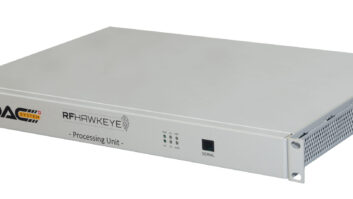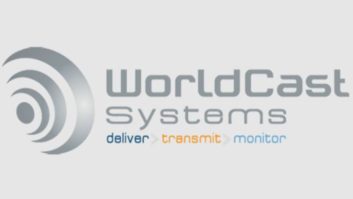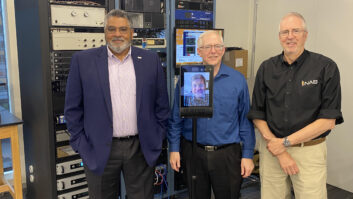Maintaining a radio facility is an ongoing process, and even new facilities have maintenance needs. Some aspects of equipment performance can be verified through the equipment’s front-panel display, but to really understand what is going on when a problem occurs, special tools must be used. Just as a screwdriver and other hardware tools are standard in a facility’s workshop, the proper test equipment should also be considered standard. And while the basic skills of evaluating system performance are still in place, the tools and the methods used today are changing significantly.
The classification of test and measurement equipment covers a broad range of equipment. This broad heading can be honed to cover routine, special or extraordinary uses. For the routine needs, some basic equipment should begin that list.
A reliable pair of headphones, an amplified speaker and a telephone test set are items that see regular use in an analog facility. These still have a place today, but with more digital signaling and routing, their use is limited.
The trusty analog audio analyzer is also limited in some ways. Because our ears are analog, there will always be some kind of analog output, so the need for some analog testing will always exist. But digital audio encoding to reduce the required bandwidth for transmission or file size for storage plays tricks on the audio stream. Lossy encoders are designed to introduce a form of distortion that cannot be perceived by the listener. Harmonic distortion and frequency response are still important to a quality listening experience, but there may be other hidden elements.
More tools and tasks
While audio and RF are still main areas of evaluation, a more recent need has been added for computer networks and IP data. Just as a voltmeter and oscilloscope are commonly found on the test bench, a LAN analyzer should be considered as another standard piece of equipment.
As digital audio and data have become more common, the time available to maintain equipment has been reduced. The newest generation of test equipment is designed to meet these challenges in various ways. Several years ago, computer-based test equipment was introduced to reduce the time required to complete the tasks. These units automated many of the functions to complete a thorough test. The process of checking a level, establishing a null for a test, then completing the test and repeating it at another frequency was reduced to seconds. In addition, these systems offered more test and measurement capabilities to a single device.
Current systems for the most part have taken one of two paths. Complete systems with a multitude of tests are widely available, but now compact and feature-specific equipment offers another option. On the workbench, the complete system can handle any need, but sometimes a quick check will suffice, and the complete system is overkill. The portable, often hand-held systems provide specific functions in a small package.
Future ready
While hand-held devices and integrated test systems are becoming commonplace for audio needs, digital transmission has its own measurement needs. While the first generation of IBOC modulation analyzer nears completion, existing equipment can quickly verify some operating parameters. A spectrum analyzer is an effective tool in evaluating RF signals. Considered for a long time a luxury item that only a corporate office could afford, newer models are being introduced that provide the needed capability in portable, affordable packages.
The latest trend in test equipment offers a secondary advantage that is no less important. When measurements must be repeated, ensuring that the proper settings are used each time will speed diagnosis.
Resource Guide
A sample of some test and measurement tools

The Fluke Networks One Touch II can locate and resolve network problems. This hand-held unit can locate available interfaces and active ports, identify MAC, IP and SNMP names and addresses, and verify link speeds. It can pinpoint duplicate IP addresses, network misconfiguration and physical errors, display usage stats and data collisions, and analyze trends with baseline data reports. The unit also includes a cable tester to identify cable length, open conductors, crossed wires and split pairs. The unit can be used in remote location and accessed via a Web browser.
www.flukenetworks.com
800-28-FLUKE

The Rohde and Schwarz FHS3 hand-held spectrum analyzer provides signal measurements from 100kHz to 3GHz. The available measurement functions are suited for mobile radio base stations, on-site fault location in RF cables, IBOC measurements or lab applications. The analyzer provides four hours of continuous operation on battery power. Functions are accessed through function keys and a menu system. As many as 100 traces and setups can be stored in the unit. The device includes software to store, review and compare data.
www.rohde-schwarz.com
410-910-7800

With a Windows-based user interface, the Gage Gagescope controls Compuscope cards for analog signal capture. Data can be displayed, analyzed, printed and saved all from within the same operating environment. No programming is required to capture, display and generate up to 60 metering channels. As much as 2GB of information can be acquired, displayed, stored and analyzed. Data can be transferred to analysis packages such as Matlab, Mathcad and Labview. Features include FFT analysis, waveform parameters, averaging, auto save and extended math. The package operates on Windows 98, ME, NT, 2000 and XP.
www.gage-applied.com
800-567-4243

The RDL PT-ASG-1 and PT-AMG2 are ready for portable or bench use from an internal battery or ac adapter power. The PT-AMG2 offers multiple functions for setting up, calibrating and troubleshooting any audio system. Housed in the unit are a precision tone generator, LED level meter and in-phase indicator. Mic and line-level I/Os are provided using balanced and unbalanced connectors. A built-in monitor speaker with level control is also provided. The PT-ASG1 contains the ultra stable 700Hz tone generator from the PT-AMG2 with balanced mic and line-level outputs on the XLR connector and -10dBV unbalanced on the RCA jack. Units may be used separately or together to set system gain mic-to-line, line-to-mic, mic-to-mic or line-to-line at professional or consumer levels.
www.rdlnet.com
800-281-2683

The Neutrik series of Minstruments includes several tools. The Digilyzer DL1 provides analysis functions for digital audio signals. All commonly standardized sampling frequencies up to 96kHz are handled in consumer and professional formats. The Minilyzer is compatible with the Minirator hand-held audio tone generator. This palm-size test instrument continuously measures audio levels as RMS or peak levels, absolute or relative to a definable reference with selectable units. The frequency measurement resolution of 100ppm offers additional functions and acts as the base for distortion measurements. The RT-2M multitone analyzer may be integrated in network administration systems and can be remote controlled for testing and quality control of audio program channels while on air. The 160ms to 960ms multitone burst provides performance tests with plots of level, distortion, noise, phase and crosstalk vs. frequency. The receiving device captures, stores and sends back the test results to the transmitter where data is analyzed.
www.nt-instruments.com
800-661-6388

Based on the original Audio Toolbox, the Terrasonde Digital Audio Toolbox offers more than 25 digital audio test, analysis and utility functions in one portable device. The DSP-powered unit features digital inputs, and digital and analog outputs, word clock in and out and a serial port. Supported digital formats include AES-3, S/PDIF, Toslink and ADAT, with bit depths up to 24 bits and sample rates up to 96kHz. Users can check lock between two digital sources and provide an analog output for monitoring. The unit also includes a digital audio cable tester that can determine the injected interface jitter for a particular cable. Other tests include digital transparency, latency, jitter, bit depth, header information, bit errors, word clock and bit clock. The digital generator creates several standard digital audio test signals.
www.terrasonde.com
888-433-2821

The SLM-100 from ATI features a large analog meter for quick and accurate measurements. The frequency ranges from 32Hz to 10kHz, and it makes A and C weighted measurements with peak or averaging response. It includes a seven-range selector switch, calibration control and a test signal output via an RCA jack. A 9V battery supplies power. SPL ranges from 50dB to 126dB, referenced to 0.0002mbar, are possible. A threaded insert allows the meter to be mounted on a camera tripod. The unit measures 6.25″ � 2.5″ �1.75″.
www.atiaudio.com
800-922-8001

The DK-Technologies MSD100C is the latest addition to the company’s range of master stereo display audio meters. The user interface provides three preset functions: two PPM analog input mode, two PPM digital input mode and four PPM both analog and digital mode. The color VGA screen displays audio levels and a stereo Lisajous pattern to ensure phase coherence. It has two audio input pairs; one stereo analog and one AES-3 digital that accepts up to 96kHz with a 24-bit A/D. The meter supports multiple PPM standards. The unit is powered by a wall-plug power supply.
www.dk-technologies.com
+45 44 850255

The Ward-Beck ABB1 Audio Bit Buddy is a convenient way to monitor digital (AES/EBU, S/PDIF) and analog audio signals. Digital and analog program audio can be monitored by the headphone output while the left and right levels are displayed on LED bar graph meters. Sampling frequency, emphasis, professional/consumer format and data errors are displayed when monitoring AES/EBU or S/PDIF signals. Digital input monitors sampling frequencies from 30kHz to 50kHz automatically. The ABS1 Audio Bit Spitter is a companion to the ABB1 and generates digital and stereo analog audio test signals. The ABS1 generates an AES/EBU digital audio signal, 1kHz or 400Hz, at the three most commonly used sampling rates of 48kHz, 44.1kHz or 32kHz. The unit may also be synchronized to an external digital reference signal. Digital signal levels of -20, -12 and 0dBFS are front panel selectable.
www.ward-beck.com
800-771-2556

Covering the 100kHz to 3GHz frequency band, the Anritsu MS2711D hand-held spectrum analyzer features an input pre-amplifier (standard) and battery operation. Available options include transmission measurement for scalar analysis capability from 25MHz to 2.5GHz, a color display and a power meter. The unit weighs 4.9lbs. It includes a multilingual user interface, it can store 15 measurement test set-ups and 200 measurement traces with alphanumeric labeling and automatic time and date stamp. An RS-232 interface is built in. Measurements include channel power, adjacent-channel power ratio and occupied bandwidth measurements that can confirm the distortion level or channel power level of a transmitter. The unit can conduct a series of spurious measurements, while the field strength mode measures propagation and coverage, or pinpoints electromagnetic leakage in broadcast systems.
www.us.anritsu.com
800-ANRITSU

The Audio Precision ATS-2 is a PC-based audio test and measurement system that provides performance capabilities to match specific needs and budgets. Analysis capabilities include harmonic distortion and multitone analyzers. The Harmonic Distortion Analyzer decreases an engineer or technician’s test time by quickly isolating and identifying circuit problems. The Multitone Analyzer enables fast analysis of frequency response, crosstalk, noise and distortion-eliminating errors, improving accuracy and reducing costs associated with test time. This series of performance tests is carried out in less than one second with a single acquisition. Audio Precision also offers a performance option that increases measurement bandwidth to 120kHz and includes complete digital audio interface tests including waveform and eye-pattern displays.
www.audioprecision.com
800-231-7350

The Prism Sound Dscope III features high-precision measurement and signal-generation for analog and digital signals. It can also provide carrier measurements, including jitter and display eye patterns. The unit runs on Windows NT or 9x. The system electronics are housed in an external unit that has a footprint about the size of a notebook PC. A flight case stores the unit and its accessories. Capabilities include FFT spectral measurement at 256k point resolution. Acquired data can be shared with other Windows applications.
www.prismsound.com
973-983-9577

The Dorrough Stereo Signal Test Set Model 1200 is a 2RU instrument that allows instant dynamic monitoring of audio levels, balance, crosstalk, system gain, S/N ratios and program center-channel build-up. Verifying proper polarity and balance of stereo broadcast lines is a primary application. Two loudness meters are provided. Function, range and attenuation controls are set in tandem with the meters to achieve all measurements. Left and right channels are input via loop-through XLR connectors or a parallel barrier strip. The back panel also sports a line-level stereo output for connection to a scope. A front-mounted stereo headphone jack is also provided for monitoring.
www.dorrough.com
818-998-2824











